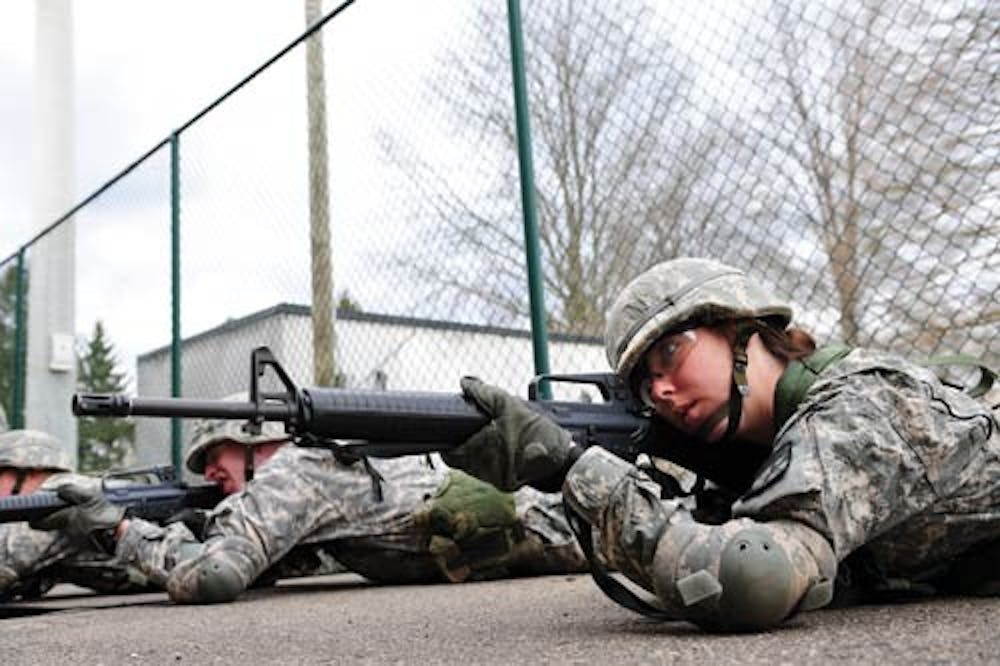The idealized soldier is strong. He has courage. He will protect citizens of the United States at all costs.
But while those traits often bring a man to mind, they also exemplify the more than 200,000 female military personnel actively serving in the armed forces. The women who join them will now be eligible to serve in combat branches of the armed forces.
As early as the American Revolution, women took arms alongside their husbands or disguised themselves as men for the sake of freedom. It wasn’t until the mid-20th century that women began to take on leadership roles in the military — specifically through the 273 Army ROTC programs and the more than 35,000 ROTC cadets in the country, according to the program’s website.
Of all the strides made by women in the military, the most prominent came in January when former United States Secretary of Defense Leon Panetta lifted the ban on women in combat branches of the armed forces.
Lifting the ban will allow junior Gwen Storch, an Army ROTC cadet, to enter the combat armor branch she only recently realized she couldn’t be a part of.
“I couldn’t believe I couldn’t commission armor,” said Storch, a junior studying psychology and women’s studies. “Thankfully, that worry was short-lived since the ban was lifted.”
OU female cadets such as Storch and senior Ashley Pierce are glad standards to commission in combat branches will not change, despite men and women having different physical test standards.
“I would rather have to meet current standards and have my peers see me as a fellow soldier than have them see me as someone who can’t cut it,” said Pierce, who recently was commissioned into the Chemical Corps, a service branch of the Army.
Lifting the ban opened up hundreds of thousands of frontline jobs to women — even elite commando jobs, the majority of which are with the Army and Marine Corps, according to U.S. Central Command.
Though having men and women living and working in close quarters on missions might be worrying for some military leaders, others say it isn’t a concern.
Pierce, who is currently engaged to an enlisted soldier, said that while they are in uniform, she and her fiancé are not a couple but rather part of a bigger unit.
“There is a respect that comes with wearing Army green,” she explained. “Our relationship would never be an issue.”
Between operations Iraqi Freedom, New Dawn and Enduring Freedom, more than 6,600 American soldiers have been killed — only 152 of who were women. Only four of those women were from Ohio, according to U.S. Central Command.
Molly Slattery, a junior cadet studying engineering, technology and management, said regardless of branch, all soldiers — male or female — are ready for combat.
“Women and men have fought and died in war throughout history,” Slattery said. “Even though women were in service and support branches before now, they had to fight. Those women died so that we could be free and so others could be too. We all recognize that worth.”
kg287609@ohiou.edu






